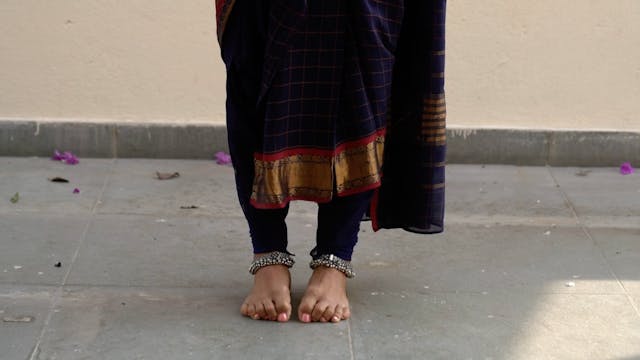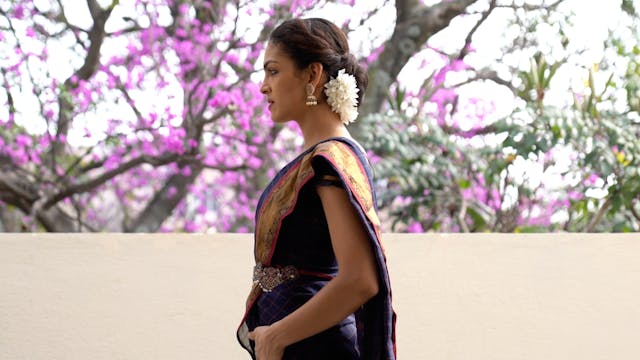Pārśni bheda Shloka
Playlist 49
•
41s
The heels are considered one of the Upāngas, or minor limbs
The movements are used not only for the precise control in the execution of Nritta but also to communicate meaning in the context of gesture.
Please refer to the Shloka below for pronunciation. Please note that the separate movements of the head when put together in a Shloka form 'Sandhis', or compound words in the Sanskrit language. Words like 'ca', 'thatha', mean "and", "also". The separate words for each movement are also given below the shloka.
Utśiptā patitā utśiptapatitā antargatā tathā
Bahirgatā mitauyuktā viyuktā ca angulī sangatā
Utśiptā
patitā
utśiptapatitā
antargatā
Bahirgatā
mitauyuktā
viyuktā
angulī sangatā
Up Next in Playlist 49
-
Gulphā bheda Shloka
The Ankle is considered one of the Upāngas, or minor limbs according to the Sangīta Ratnākara.
The movements of the ankle are important in pure dance and in emotive contexts.
Please refer to the Shloka below for pronunciation. Please note that the separate movements of the head when put togethe...
-
Thala bheda Shloka
The soles of the feet are considered one of the Upāngas, or minor limbs.
The movements are used not only for the precise control in the execution of Nritta but also to communicate meaning in the context of gesture.
Please refer to the Shloka below for pronunciation. Please note that the separat...
-
Udara bheda Shloka
The stomach is considered one of the Upāngas, or minor limbs.
The movements are used primarily to communicate meaning in the context of gesture.
Please refer to the Shloka below for pronunciation. Please note that the separate movements of the head when put together in a Shloka form 'Sandhis', ...


